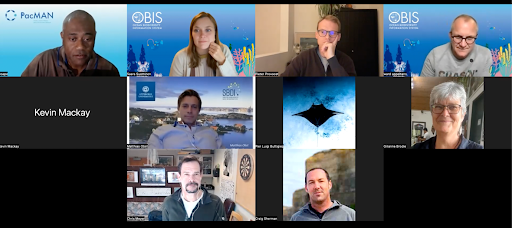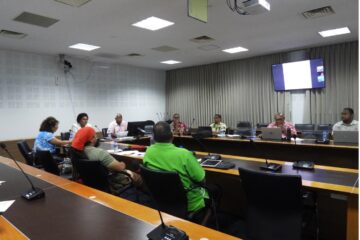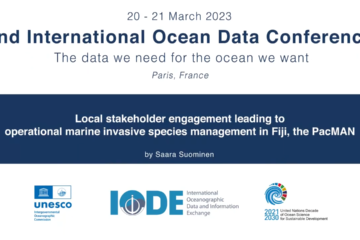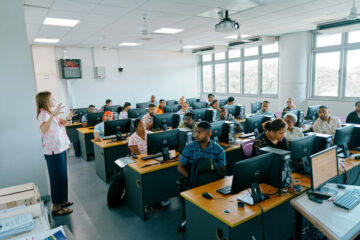
The second PacMAN scientific advisory board (SAB) meeting took place on the 20th of October 2022 as a virtual meeting. The report on what was discussed during the meeting is available here. Five scientific advisory board members joined in-person, while the remaining members were given a chance to comment on the updated monitoring plan prior to the meeting on an online document. The meeting objectives were to give an update on the progress of the PacMAN project during the second trial year, discuss possible updates required for the monitoring plan and protocols and give an overview of the planned concept of the decision support tool.
Mr. Joape Ginigini the local project manager explained in detail the activities that had been done during the year as well as the changes made to the protocols. The PacMAN project field protocols have been extensively tested and optimized during the second year of the project. Settlement plate depths have been modified to fit the depth profile and tidal cycle at the
Suva port. Curved settlement plates are used instead of flat ones, which received interest from the SAB members. The amount of time that the settlement plates are incubated and the possible methods to collect motile organisms was discussed. PacMAN data formatting is being tested by Ms. Miriama Vuiyasawa the local research assistant and Mr. Kelly Brown the marine collection curator at USP. The importance of metadata collection and registration was emphasized by the SAB, especially in the case of biobanking samples.
Mr. Pieter Provoost the OBIS data manager introduced the first conceptualization of the PacMAN decision support tool and compared it to other available tools globally. The SAB members have extensive experience with similar modelling done for example in Sweden. Modelling is largely used to pinpoint risk areas as well as find the original location of species detections, for further monitoring to take place. Hydrodynamic models at local scale can be used to identify the possible source of a detection, helping to find specimens to confirm important detections.
The meeting was closed on a discussion of future considerations for the next year of PacMAN. The importance of regional relationships was discussed. There is already good development in this direction with PacMAN taking part in regional workshops. The stakeholder engagement of the project has been very successful and the project has received a lot of interest from regional stakeholders, while also bringing marine biosecurity to the forefront of policy in Fiji. It was also emphasized that it is important to manage expectations when working with eDNA, that managers and administrators have a realistic understanding of what eDNA can do, and which use cases it is best suited for. Awareness of developments in the regulation of Digital Sequence Information was also discussed. PacMAN was thanked for its efficient co-design approach with a strong effort in building a project that answers local stakeholder needs and takes into account local capacities.



0 Comments